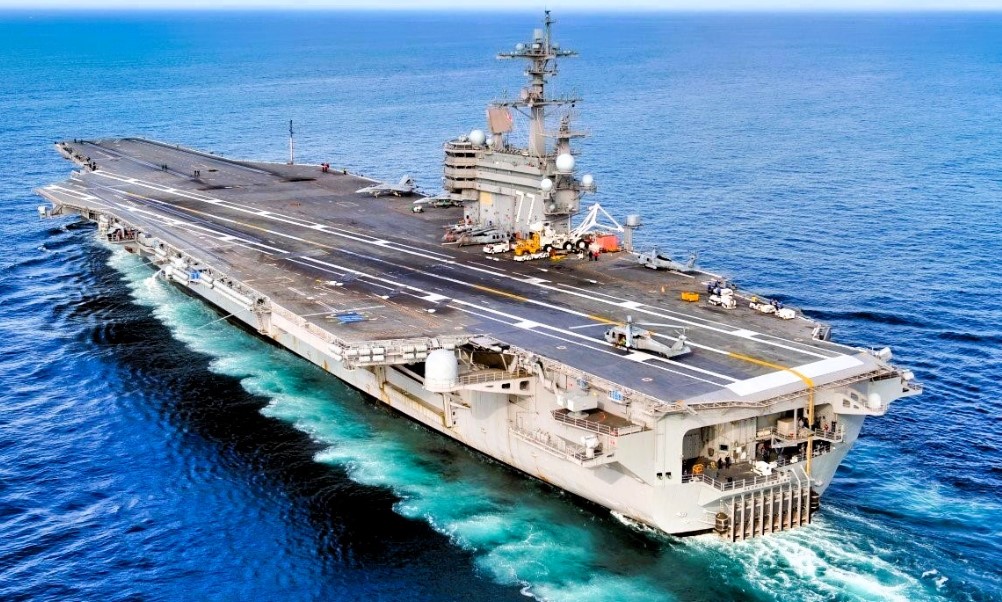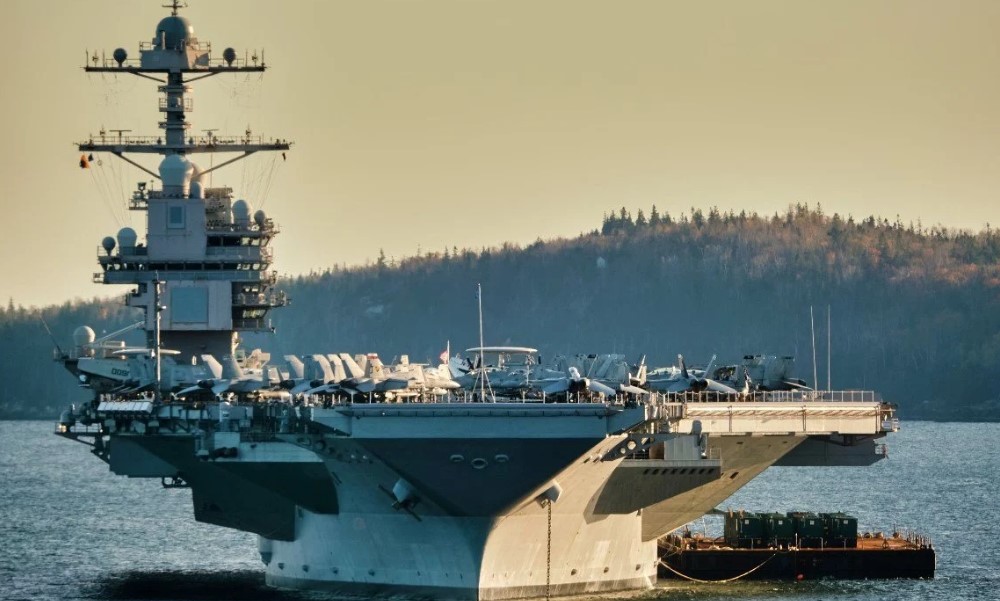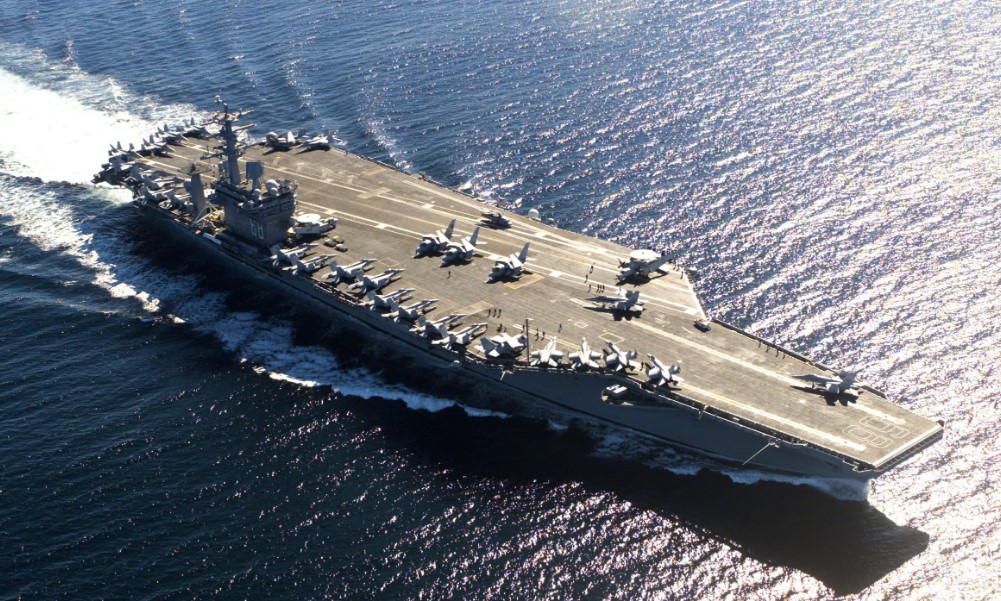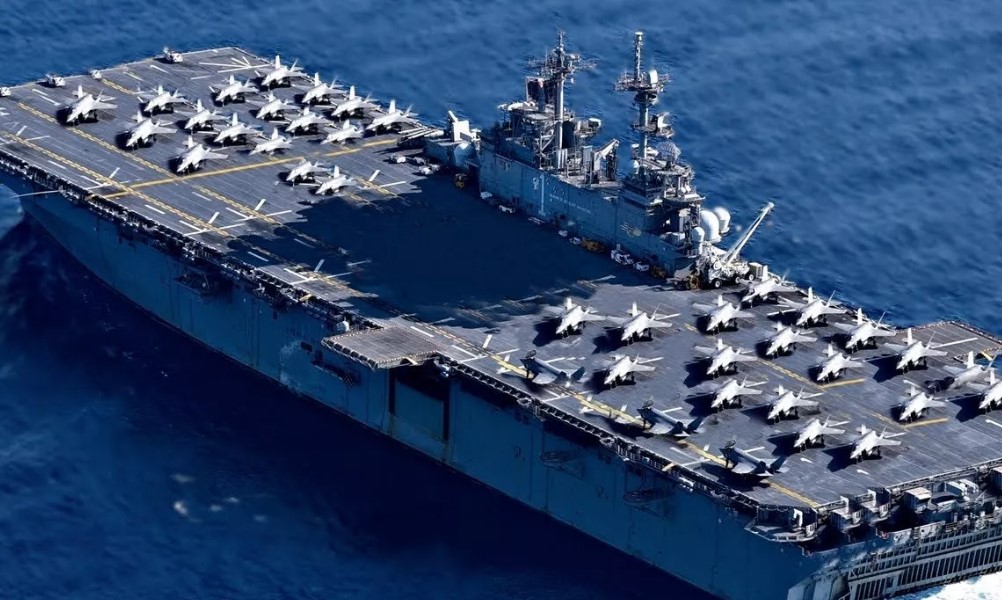Aircraft carriers are a cornerstone of modern naval strategy, representing the ability of a nation to project air power globally. These massive ships serve as mobile airbases, providing essential support for both military operations and humanitarian efforts. With advanced technology, a significant flight deck, and the capacity to house, launch, and recover aircraft, they are unmatched in versatility and strategic importance.
What is an Aircraft Carrier?

An aircraft carrier is a large naval warship that serves as a mobile airbase, allowing military forces to project air power far beyond their country’s borders.
These ships are designed to carry, launch, and recover various types of aircraft, including fighter jets, helicopters, and surveillance planes.
Aircraft carriers play a crucial role in modern naval strategy, acting as powerful tools for defense, offense, and humanitarian missions.
Key Features of Aircraft Carrier

Aircraft carriers are some of the most complex and powerful naval vessels in the world, designed to project air power globally and serve as mobile military bases. Here are the key features that make these ships essential to modern naval operations:
1. Flight Deck
The flight deck is the large, flat surface on top of the aircraft carrier where aircraft take off and land. This deck is often the most prominent feature of the vessel and is designed to accommodate multiple types of aircraft, from fighter jets to helicopters. On some carriers, like the U.S. Navy’s USS Gerald R. Ford, the flight deck also integrates advanced systems such as the Electromagnetic Aircraft Launch System (EMALS), which replaces traditional steam catapults for launching aircraft more efficiently.
2. Hangar Bay
Below the flight deck is the hangar bay, where aircraft are stored and maintained. The hangar is equipped with elevators that transport aircraft from the hangar to the flight deck. These elevators must be fast and reliable to ensure that planes can be deployed quickly. The HMS Queen Elizabeth from the Royal Navy, for instance, can transport multiple aircraft simultaneously to optimize mission readiness.
3. Command and Control Centers
Every aircraft carrier is equipped with highly advanced Command and Control Centers that manage all ship operations, including air traffic control, radar systems, and combat operations. These centers house sophisticated communication systems to coordinate not only the carrier’s operations but also the fleet of ships and aircraft that often accompany it. The USS Gerald R. Ford has one of the most advanced systems, using Dual Band Radar for tracking both air and surface threats.
4. Defense Systems
Aircraft carriers are equipped with multiple layers of defense to protect against air, sea, and underwater threats. These systems include anti-aircraft missiles, close-in weapon systems (CIWS), and anti-submarine warfare systems. For example, France’s Charles de Gaulle aircraft carrier is armed with advanced missile systems that can target threats from long distances.
5. Nuclear Propulsion (Optional)
Some aircraft carriers, like the Charles de Gaulle and USS Gerald R. Ford, are powered by nuclear reactors. Nuclear propulsion allows these ships to operate for long periods without needing to refuel, giving them greater operational range and endurance compared to conventionally powered carriers. This feature is crucial for extended missions far from home ports.
Aircraft Carrier Types

Aircraft carriers are classified into two main types based on their propulsion systems and operational capabilities: conventional aircraft carriers and nuclear-powered aircraft carriers. These types differ in their technology, range, and operational advantages, making them suitable for different military strategies and missions.
1. Conventional Aircraft Carriers
Conventional aircraft carriers are powered by fuel-based engines, typically using gas turbines or diesel engines. These carriers require regular refueling, which can limit their operational range and time at sea. However, they are generally less expensive to build and maintain compared to nuclear-powered carriers. Conventional carriers are often deployed in coastal defense operations or regional power projection, where refueling stations are readily available.
Key Features:
- Fuel-Powered Engines: Require frequent refueling, limiting long-term operations.
- Cost-Effective: Lower initial construction costs compared to nuclear-powered carriers.
- Deployment Flexibility: Suitable for regional and short-term operations.
Use Case: Conventional aircraft carriers are best suited for countries that focus on regional defense or need versatile vessels for shorter missions.
2. Nuclear-Powered Aircraft Carriers
Nuclear-powered aircraft carriers are equipped with nuclear reactors that provide significantly longer operational range and time at sea without refueling. These carriers are capable of global power projection, allowing nations to maintain a military presence in distant regions for extended periods. They are ideal for long-term deployments, including combat missions, humanitarian operations, and global patrols.
Key Features:
- Nuclear Reactors: Enable extended operational range without frequent refueling.
- Global Reach: Ideal for countries looking to project power on a global scale.
- Advanced Technology: Typically feature the latest in radar, defense, and aircraft launch systems.
Use Case: Nuclear-powered carriers are used by nations with significant global military interests, such as the United States, to maintain long-term strategic presence abroad.
The Top 5 Aircraft Carriers in the World

1. USS Gerald R. Ford (CVN-78)
The USS Gerald R. Ford is the most advanced top aircraft carrier in the world, belonging to the U.S. Navy. Launched in 2017, it represents the latest generation of American aircraft carriers, designed with cutting-edge technology to improve operational efficiency and combat capabilities.
Key Features:
- Advanced Reactor: Its nuclear reactor allows for extended operational time without refueling, enhancing global reach.
- Electromagnetic Aircraft Launch System (EMALS): Replaces traditional steam catapults for launching aircraft, increasing the speed and precision of aircraft launches.
- Dual Band Radar (DBR): Provides enhanced tracking and detection capabilities.
Benefits:
- Increased sortie rates, allowing for quicker and more efficient aircraft deployment.
- Improved combat readiness through advanced radar and defense systems.
- Reduced manpower needs compared to older carriers due to automation technology.
Use Case:
The USS Gerald R. Ford is ideal for countries looking for global power projection. It provides enhanced operational capacity and is built to handle large-scale military operations, making it perfect for both offensive and defensive missions.
Price:
Approximately $13 billion.
Learn more about USS Gerald R. Ford
2. HMS Queen Elizabeth (R08)
The HMS Queen Elizabeth is the largest and most powerful warship in the Royal Navy’s fleet. It is designed to operate F-35B Lightning II jets and helicopters, making it highly versatile for a range of missions, from combat operations to disaster relief.
Key Features:
- Flight Deck: Large enough to carry up to 36 aircraft.
- Ski-Jump Takeoff: Enables short takeoff operations for F-35B jets.
- Dual-Band Radar: Provides comprehensive tracking and targeting capabilities for both air and surface threats.
Benefits:
- Versatile aircraft deployment, including both fixed-wing jets and helicopters.
- Suitable for various operations, including combat, peacekeeping, and humanitarian missions.
- Stealth capabilities, allowing for undetected operations in conflict zones.
Use Case:
The HMS Queen Elizabeth is an excellent choice for multi-role missions. Its ability to operate in diverse environments makes it ideal for countries that need a versatile carrier capable of both combat and non-combat roles, such as disaster response.
Price:
Approximately $4.5 billion.
Learn more about HMS Queen Elizabeth
3. INS Vikramaditya
The INS Vikramaditya is the flagship of the Indian Navy, serving as a critical component of India’s coastal defense and regional power projection. Originally a Soviet vessel, it was extensively refurbished to meet modern standards before entering service in 2013.
Key Features:
- Ski-Jump Takeoff: Facilitates short takeoffs for aircraft.
- Helicopter Capabilities: Supports multiple helicopter operations for a variety of missions.
- Air Defense Systems: Equipped with advanced radar and missile systems for air defense.
Benefits:
- Adaptable to different mission types, from coastal defense to air patrol.
- Can carry a range of aircraft, including fighter jets and helicopters.
- Robust build, ensuring long-term durability in maritime environments.
Use Case:
Best suited for countries looking to enhance their regional military dominance and defend coastal borders. The INS Vikramaditya provides strong air and naval defense capabilities.
Price:
Approximately $2.3 billion.
Learn more about INS Vikramaditya
4. Charles de Gaulle (R91)
The Charles de Gaulle is the only nuclear-powered aircraft carrier in the French Navy. It plays a significant role in France’s global military strategy and has been deployed in numerous international operations.
Key Features:
- Nuclear Reactor: Allows the vessel to operate for long periods without refueling.
- Flight Deck: Capable of carrying 40 aircraft, including both jets and helicopters.
- Advanced Missile Systems: Equipped with state-of-the-art defense systems for air and missile defense.
Benefits:
- Long operational range due to nuclear propulsion.
- Capable of supporting long-term deployments in remote areas.
- High-tech radar and missile systems enhance combat effectiveness.
Use Case:
The Charles de Gaulle is perfect for long-term global missions that require sustained military presence. Its nuclear power makes it an excellent option for extended deployments in remote regions.
Price:
Approximately $5 billion.
Learn more about Charles de Gaulle
5. Shandong (Type 002)
The Shandong is China’s second aircraft carrier, and its first domestically produced model. It represents China’s growing naval capabilities and is designed to enhance its presence in the South China Sea.
Key Features:
- Ski-Jump Launch System: Allows for short takeoff and recovery operations.
- Anti-Air and Anti-Ship Systems: Provides robust defensive capabilities against both aerial and naval threats.
- Large Aircraft Capacity: Can carry up to 40 aircraft.
Benefits:
- Enhances regional naval dominance, particularly in contested waters.
- High aircraft capacity, allowing for increased sortie rates and rapid deployment.
- Advanced radar and missile systems provide strong defensive capabilities.
Use Case:
Ideal for countries seeking to project power in regional conflicts or maintain control over maritime territories. The Shandong is designed for combat readiness and rapid response to threats.
Price:
Approximately $3 billion.
Learn more about Shandong
Product Comparison Table
| Aircraft Carrier | Use Case | Advantages | Disadvantages | Price | Key Features |
|---|---|---|---|---|---|
| USS Gerald R. Ford | Global military operations | Advanced radar, increased sortie rate | High operational costs | $13 billion | Electro-Magnetic Launch, Dual Band Radar |
| HMS Queen Elizabeth | Multi-role missions | Stealth aircraft capabilities, versatile | Lower speed than newer carriers | $4.5 billion | Ski-Jump Takeoff, Dual-Band Radar |
| INS Vikramaditya | Coastal defense | Multi-role functionality, durable | Older propulsion system | $2.3 billion | Ski-jump system, four helicopter spots |
| Charles de Gaulle | Long-range global missions | Nuclear propulsion, extended range | Expensive to maintain | $5 billion | Nuclear reactor, advanced radar systems |
| Shandong | Regional dominance | High aircraft capacity, advanced defenses | Unproven systems | $3 billion | Ski-jump system, anti-ship missile systems |
Benefits of Top Aircraft Carriers
- Global Power Projection: Aircraft carriers enable nations to extend their military influence beyond their borders. They allow air operations anywhere in the world without the need for local bases, enhancing a nation’s strategic military presence.
- Operational Flexibility: Carriers provide unmatched operational flexibility, being able to switch from combat operations to humanitarian missions with relative ease. Their ability to carry both fixed-wing aircraft and helicopters makes them versatile tools for military leaders.
- Humanitarian Support: In addition to their military capabilities, aircraft carriers can provide essential services during disasters. Their ability to quickly deploy aircraft for medical evacuations, supply drops, and transport makes them vital for disaster relief operations.
- Deterrence: The sheer presence of an aircraft carrier can act as a powerful deterrent in geopolitical conflicts. Countries equipped with such vessels often find themselves in a stronger negotiating position due to the strategic advantage carriers provide.
How to Buy an Aircraft Carrier
Purchasing an aircraft carrier is an extensive process, usually handled through defense contracts between governments and manufacturers. The procurement process can take several years and involves careful negotiation, planning, and budgeting.
Where to Buy:
- Government Defense Contractors: Most aircraft carriers are purchased directly from national defense contractors, such as Lockheed Martin or BAE Systems.
- Private Military Contractors: Some companies specialize in selling military hardware to foreign governments through international arms deals.
Steps to Purchase:
- Engage with Defense Contractors: Contact defense companies to initiate the bidding process.
- Secure Government Approval: Ensure that all transactions are approved by the respective national governments.
- Finalize the Contract: Negotiate the details of the purchase, including costs, delivery times, and maintenance agreements.
For more information, visit:
- Lockheed Martin
- BAE Systems
FAQs
1. What are the main types of aircraft carriers?
Aircraft carriers are generally classified into conventional and nuclear-powered carriers. Nuclear-powered carriers can operate longer without refueling, while conventional carriers rely on fuel.
2. Why are aircraft carriers so expensive?
The high cost of aircraft carriers is due to their complex technology, advanced defense systems, and the vast amount of manpower required to build and maintain them.
3. How long can nuclear-powered aircraft carriers operate?
Nuclear-powered aircraft carriers can operate for over 20 years without refueling, offering extended global reach and flexibility.
4. Can aircraft carriers be used for non-military purposes?
Yes, aircraft carriers are often used for humanitarian missions, disaster relief, and medical evacuations during crises.
5. What is the most advanced aircraft carrier in the world?
The USS Gerald R. Ford is currently the most advanced aircraft carrier, featuring electromagnetic aircraft launch systems and state-of-the-art radar technology.